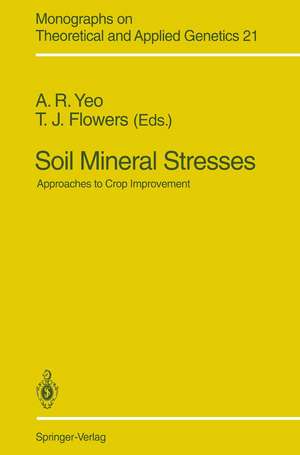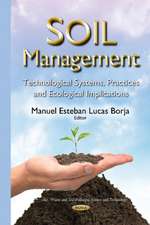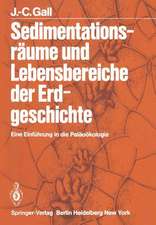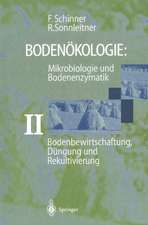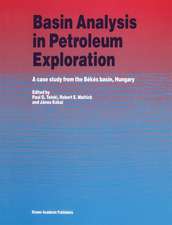Soil Mineral Stresses: Approaches to Crop Improvement: Monographs on Theoretical and Applied Genetics, cartea 21
Editat de Anthony R. Yeo, Timothy J. Flowersen Limba Engleză Paperback – 23 aug 2014
Din seria Monographs on Theoretical and Applied Genetics
- 20%
 Preț: 559.63 lei
Preț: 559.63 lei - 18%
 Preț: 985.38 lei
Preț: 985.38 lei -
 Preț: 383.71 lei
Preț: 383.71 lei - 20%
 Preț: 555.35 lei
Preț: 555.35 lei - 15%
 Preț: 641.38 lei
Preț: 641.38 lei - 15%
 Preț: 644.30 lei
Preț: 644.30 lei - 15%
 Preț: 643.65 lei
Preț: 643.65 lei - 15%
 Preț: 640.06 lei
Preț: 640.06 lei - 15%
 Preț: 649.71 lei
Preț: 649.71 lei - 15%
 Preț: 639.41 lei
Preț: 639.41 lei -
 Preț: 387.20 lei
Preț: 387.20 lei - 15%
 Preț: 642.68 lei
Preț: 642.68 lei - 15%
 Preț: 639.25 lei
Preț: 639.25 lei - 15%
 Preț: 636.30 lei
Preț: 636.30 lei - 15%
 Preț: 644.82 lei
Preț: 644.82 lei - 15%
 Preț: 648.42 lei
Preț: 648.42 lei - 15%
 Preț: 643.16 lei
Preț: 643.16 lei - 20%
 Preț: 558.52 lei
Preț: 558.52 lei - 15%
 Preț: 639.08 lei
Preț: 639.08 lei
Preț: 637.59 lei
Preț vechi: 750.11 lei
-15% Nou
Puncte Express: 956
Preț estimativ în valută:
122.04€ • 132.61$ • 102.58£
122.04€ • 132.61$ • 102.58£
Carte tipărită la comandă
Livrare economică 21 aprilie-05 mai
Preluare comenzi: 021 569.72.76
Specificații
ISBN-13: 9783642842917
ISBN-10: 3642842917
Pagini: 236
Ilustrații: XIV, 218 p. 3 illus.
Dimensiuni: 155 x 235 x 12 mm
Greutate: 0.34 kg
Ediția:Softcover reprint of the original 1st ed. 1994
Editura: Springer Berlin, Heidelberg
Colecția Springer
Seria Monographs on Theoretical and Applied Genetics
Locul publicării:Berlin, Heidelberg, Germany
ISBN-10: 3642842917
Pagini: 236
Ilustrații: XIV, 218 p. 3 illus.
Dimensiuni: 155 x 235 x 12 mm
Greutate: 0.34 kg
Ediția:Softcover reprint of the original 1st ed. 1994
Editura: Springer Berlin, Heidelberg
Colecția Springer
Seria Monographs on Theoretical and Applied Genetics
Locul publicării:Berlin, Heidelberg, Germany
Public țintă
ResearchCuprins
1 Introduction: World Population and Agricultural Productivity.- 1.1 How Many People Are There?.- 1.2 Agricultural Requirements.- 1.3 Population-Carrying Capacity.- 1.4 How Much Land Is There?.- 1.5 Increasing Food Production.- References.- 2 Conventional Plant Breeding for Tolerance to Problem Soils.- 2.1 Screening Techniques.- 2.2 Variability in Tolerance for Soil Stresses.- 2.3 Genetics of Tolerance for Soil Stresses.- 2.4 Crop-Improvement.- 2.5 Summary.- References.- 3 Physiological Criteria in Screening and Breeding.- 3.1 Introduction.- 3.2 Reasons for the Use of Physiological Selection.- 3.3 Salinity.- 3.4 Drought.- 3.5 Physiological Selection Procedures.- References.- 4 Cytogenetic Manipulations in the Triticeae.- 4.1 Introduction.- 4.2 Background to Wheat and Salinity.- 4.3 Cytogenetics of Wheat.- 4.4 Transfer into Wheat of Alien Genes for Tolerance to Salt.- 4.5 The Development of Hybrids as New Crop Species.- 4.6 The Interface Between Cytogenetics and Physiology.- 4.7 GeneticControl of Salt Tolerance in Barley.- 4.8 Genes for Abiotic Stress Tolerance in the Triticeae.- 4.9 Examples of Alien Introduction.- 4.10 Genetic Markers in Plant Breeding.- 4.11 Summary.- References.- 5 Tissue Culture in the Improvement of Salt Tolerance in Plants.- 5.1 Introduction.- 5.2 Application of Tissue Culture to Obtain Salt-Tolerant Plants.- 5.3 Tissue Culture in the Identification and Characterisation of Cellular Determinants of Salt Tolerance.- 5.4 Conclusion.- References.- 6 The Agricultural Use of Native Plants on Problem Soils.- 6.1 Evolution of Domestic Species.- 6.2 Limits of Improving Existing Crops.- 6.3 Availability of Alternatives.- 6.4 Methods of Domestication.- 6.5 Time Scale for Agricultural Development.- 6.6 Conclusions.- References.- 7 Metal Toxicity.- 7.1 Introduction: Sources of Toxicity.- 7.2 The Measurement of Tolerance.- 7.3 Variability in Wild Species.- 7.4 Variability in Cultivated Species.- 7.5 The Genetic Basis of Metal Tolerance.- 7.6 The Physiological Basis of Tolerance to Metals.- 7.7 Synthesis.- References.- 8 Micronutrient Toxicities and Deficiencies in Rice.- 8.1 Introduction.- 8.2 Iron.- 8.3 Manganese.- 8.4 Zinc.- 8.5 Copper.- 8.6 Boron.- 8.7 Molybdenum.- References.- 9 Summary: Breeding Plants for Problem Soils — Current Knowledge and Prospects.- 9.1 Why Grow Crops on Problem Soils?.- 9.2 Approaches to the Utilisation of Problem Soils.- 9.3 Selection of Parents and Within Breeding Populations.- 9.4 Tolerance and Potential Yield.- 9.5 Genetics of Tolerance to Problem Soils.- 9.6 Transfer from Other Species.- 9.7 Domestication of New Crops from the Native Flora.- 9.8 Outlook.
